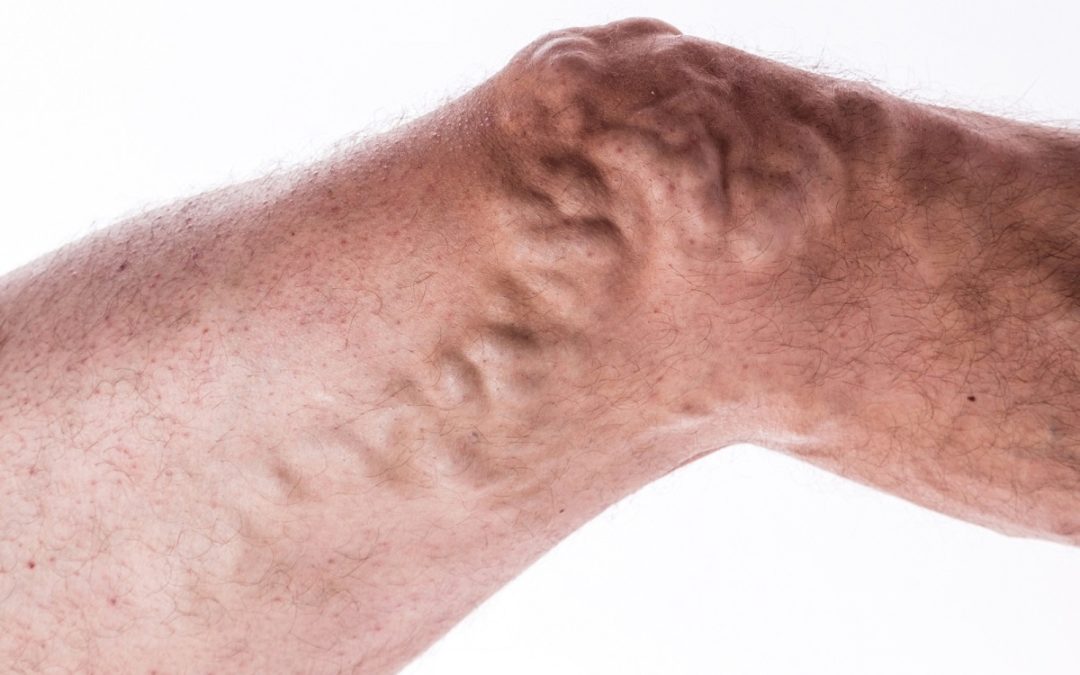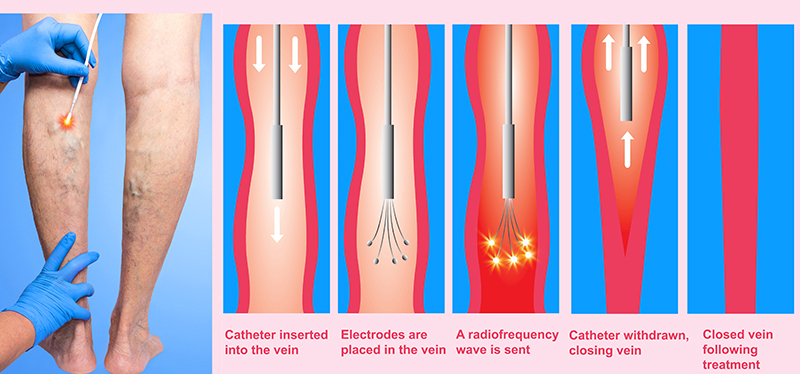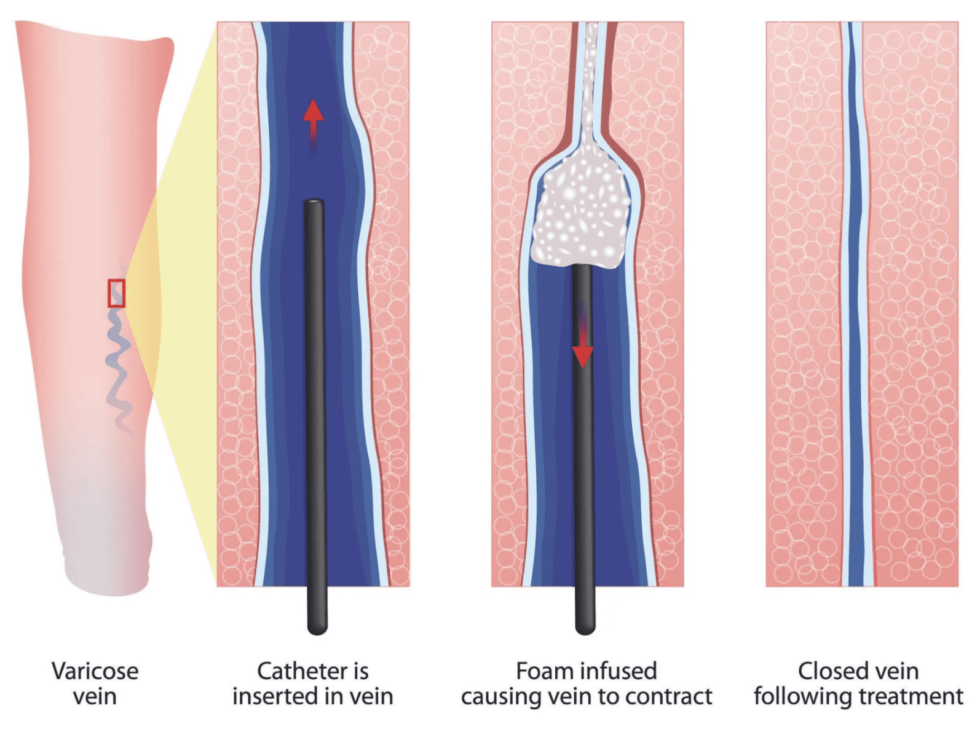3 Ways to Treat Varicose Veins Without Surgery
Author: StrideCare Internal Team

Varicose veins are a common condition that affects roughly 25% of men and women in the United States. For some people, they are more of a cosmetic annoyance than anything else. But for others, the bulging and twisted veins on their legs and feet are painful and can lead to serious medical issues if left untreated. The good news is that modern medicine has advanced to the point where a qualified and experienced vascular doctor can treat varicose veins without surgery.
Depending on your particular vein problem, a minimally invasive procedure might be all it takes to cosmetically improve the look of your veins and reduce a variety of painful symptoms.
Do You Have Any of These Symptoms?
- Tiredness
- Swelling
- Achiness
- Heaviness
- Pain
- Numbness
- Throbbing
- Itching
- Cramping
- Restless legs
Treat Varicose Veins Now to Avoid These Complications
If you don’t talk to your doctor to see about how to treat varicose veins, the appearance and symptoms may worsen over time. This can lead to more serious complications, including:
Venous Insufficiency — This is when broken valves do not hold a seal and blood pressure builds up in the lower legs. This can lead to everything from swelling of the legs to drastic skin changes.
Restless Leg Syndrome (RLS) — Also called Willis-Ekbom Disease, RLS causes uncomfortable sensations in the legs and an irresistible urge to move them. It usually happens sitting or lying down. It can worsen with age and interrupt sleep.
Skin and foot ulcers — When you don’t have proper blood circulation, very painful ulcers can form on your legs, feet, toes, heels, and ankles. These can take a considerable amount of time to heal.
Deep Vein Thrombosis — DVT is a potentially life-threatening condition where blood clots block or severely reduce blood flow in a vein. They tend to form in the deep, large veins of the pelvis, legs, thighs, or arms.
Phlebitis and Thrombophlebitis — Inflammation (phlebitis) can restrict blood flow in a vein, and thrombophlebitis is inflammation that causes blood clots in one or more veins, usually in your legs.
How to Treat Varicose Veins Without Surgery
An average of one in every three adults over the age of 45 develops some form of vein disease. If you are experiencing symptoms like the ones above and want to treat varicose veins to avoid more serious complications, it is critical that you visit a vascular expert soon. Your doctor will likely first suggest that you wear compression stockings, which are a great way to encourage healthy blood flow and possibly avoid future procedures. If compression stockings do not work or are not providing enough relief, there are additional options.
Below are three minimally invasive approaches we use at StrideCare to treat varicose veins without surgery:
- Sclerotherapy
With sclerotherapy, there is no need for large incisions or lengthy hospital stays to treat varicose veins. Our board-certified vein specialists inject a specially formulated chemical solution full of sclerosing agents (either in liquid or foam form) into the affected veins. This solution irritates the vein walls and causes the vein to collapse and disappear, safely and effectively relieving your uncomfortable symptoms.
Not only does sclerotherapy offer a minimal downtime and recovery period, but the procedure itself only takes between 15 minutes to an hour, depending on your condition. It is also versatile enough to treat mild to moderate varicose veins and improve the appearance of spider veins on the thighs, calves, and feet.

- Radiofrequency Ablation
This procedure is done through just a needle stick. A thin catheter is inserted into the diseased vein, through a small puncture that does not leave a scar. Under ultrasound guidance, the catheter is guided up into the great saphenous vein in the thigh or the small saphenous vein in the calf. The radiofrequency energy is delivered to the inside of the vein, heating and sealing the vein closed. Much like sclerotherapy, radiofrequency ablation takes less than an hour to complete. Minor side effects include swelling, bruising, and tenderness around your treated area.
Radiofrequency ablation is a good option for patients who suffer from mild to moderate varicose veins as well as those who need relief from enlarged veins that have filled with blood.

- Microfoam Ablation
Microfoam ablation is another minimally invasive way to treat varicose veins, and, at first glance, appears similar procedurally to sclerotherapy. But unlike sclerotherapy, which is best suited for small and medium vein issues, microfoam ablation treats larger, tortuous (twisted) veins as well as veins above and below the knee, and even veins that were previously treated with other methods that were not as effective.
With this procedure, your specialist injects a special microfoam in your affected veins to relieve symptoms without the use of heat or tumescent. The foam fills the desired section of the vein, and the diseased vein collapses. Blood flow then shifts to healthier veins nearby.

StrideCare Offers Non-Surgical Options
Do you need help to treat varicose veins? Are you worried that your symptoms could be a sign of more serious health conditions? StrideCare can help. Our expert doctors and caring staff utilize the latest technologies and minimally invasive procedures to help our patients with a variety of vein diseases.
The vascular physicians at StrideCare are board certified diagnostic radiologists with additional fellowship training in vascular and interventional radiology. If your veins need treatment, or you have questions on how to avoid the onset of varicose veins, the experts at StrideCare will recommend an individualized plan to help you get the best results.
Prior to starting any new treatment or questions regarding a medical condition, always seek the advice of your doctor or other qualified health provider. This information is not a substitute for professional medical advice.
StrideCare serves the South Texas area including Houston, San Antonio, Austin, Round Rock, Bastrop, Brushy Creek, Cedar Park, Converse, Georgetown, Hutto, Kyle, Leander, Marble Falls, New Braunfels, Pasadena, Pearland, Pflugerville, San Marcos, Schertz, Houston, Sugar Land, Katy, Webster, Bay City, Clear Lake, Lake Jackson, The Woodlands, Universal City, Spring, Kingwood, Stafford, Conroe, Texas City, Cypress, League City, Bellaire, and more.


